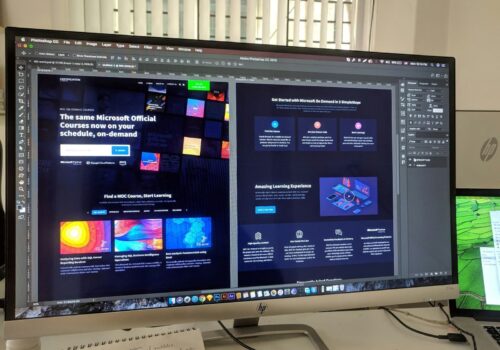Integrating Visitor Management Systems into Modern Web Applications: A Developer’s Guide
Visitor management systems are great sources for enhancing security, streamlining visitor interactions, and maintaining comprehensive records of onsite guests who visit your office location. So what is visitor management? In this article, we will discover this concept and explain how you can efficiently integrate visitor management systems into modern web apps.
VMS Integration with APIs
Acting as a bridge between your app and the VMS, APIs will allow effective data exchange and command execution. For effective integration of VMS, ensure that your personnel are trained to understand RESTful APIs and be familiar with the standard HTTP methods necessary for smooth operations. Besides, you need to pay attention to creating robust API documentation and reviewing it in detail afterwards, and do not forget about providing stable and updated versions of APIs.
Front-end Development
As you may know, the efficient frontend development, enhanced with highly intuitive, responsive and engaging features, is the gateway to the integrated and robust functionalities. Create appealing and engaging user-friendly interfaces in order to provide simplicity, clarity and consistency to your apps. Make sure the interface design is made with the help of appropriate contrast ratios in mind, with text alternatives in the presence of non-text context, and ensures easy navigation of keyboards.
Besides, you can upgrade the visuals with the help of guided interactions such as implemented tooltips, indicators of progress, and messages of validation that could guide users throughout such processes as visitor registration and check-ins. With responsive layouts, you can ensure mobile-first design, which guarantees that essential features are accessible on all devices. Flexible grid systems help developers create fluid layouts that could adjust to different screen sizes.
Leveraging Progressive Web App (PWA) technologies can greatly upgrade the user experience with such features as offline functionality under the circumstances of poor connectivity, sending push notifications in order to inform clients about meetings, and upcoming events, such as visitor arrivals or appointment reminders.
Moreover, programmers can configure the ability of home screen installation, which would allow users to install the web app on their home screens for the improved native-like app experience without the necessity of app store downloading.
Back-end Integration
While the frontend ensures visuals, the backend guarantees handling the heavy lifting or effective data processing, storing and communication with the visitor management systems. First of all, you need to create a wholesome database design, choose either SQL or NoSQL database and implement indexes for fast data retrieval. You can also implement regular backups and recovery plans for the sake of data loss prevention. With the help of such services as robust RESTful, companies can establish clear communication between clients and servers.
Security Considerations
One of the most important aspects of integration is the protection of sensitive data. For instance you may use such approaches as data encryption between the client, your server, and the APIs of visitor management systems. We recommend you store encryption keys in a secure place, and conduct regular audits so that you could identify and solve the issues with vulnerabilities in your encryption implementations.
Then, ensure compliance with the General Data Protection Regulation. In general, this will regard establishing clear and transparent consent mechanisms, which would explain how visitor data is going to be used; the right to access and erase their data and trying to collect only the data which is necessary for the intended purposes, which would reduce the risks that come with data breaches.
There are other tools that help on the way to effective security enhancement. For instance, you can safeguard your application with the help of Cross-Site Scripting Prevention techniques, which help maintain user trust and the integrity of your data. This can be realized through such extensive methods as rigorous user input validations and sanitizing on both client and server sides for the sake of prevention of malicious code injection. Output encoding, which neutralizes potentially harmful scripts before rendering them in the utilized browsers, and using security libraries and frameworks to provide inbuilt protections against common vulnerabilities.
Performance Optimization
For the purpose of effective performance optimization, you can use caching, asynchronous processing and load balancing. Caching strategies could help you reduce the server load and accelerate the delivery of content.
These techniques include client- and server-side caching, cache invalidation, which invalidates and refreshes cached data, and API response caching that enables caching of API responses that doesn’t change frequently and reduces redundant calls to the APIs in the visitor management systems.
With the help of asynchronous processing, you can offload time-consuming tasks and improve the app responsiveness. You also should pay attention to effective load balancing, which could distribute traffic in an efficient way, which ensures high availability and scalability. To monitor server instances and route traffic away from unhealthy nodes, configure regular health checks.

Testing and Deployment
For ensuring the adherence to the high quality of the integration, companies should pay close attention to such areas as rigorous testing and deployment. The QA department could use special testing frameworks, mock external dependencies, aim for high test coverage and introduce automated testing in order to forestall the risks of human errors and catch the issues early in the process. Besides, continuous integration and deployment are the processes that would greatly benefit the quality of the development and deployment as a result.
Streamlining the Visitor Experience
With top-notch visitor registration and management options, you’d be able to streamline all the major visitor control processes. For instance, you can use self-service kiosks that empower your employees and guests to check-in without the need for personal assistance. Another cutting-edge innovation is the visitor pre-registration feature, which will allow you to send personalized invitations to your guests before their visit. This special pre-registration procedure could speed up the check in, as their details could already be in the system, and ensure higher safety of their sensitive data.




